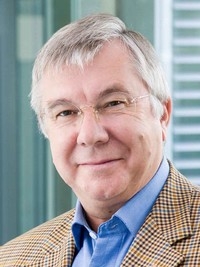Seminar
Relativistic quantum chemistry and recent applications to physics and chemistry

Speaker: Prof. Minori Abe
Affiliation: Tokyo Metropolitan University
Schedule: 13:30—, 4th April 2017
Place: RIBF Conference room, 2F RIBF building
Language: English
Abstract:
Relativistic effects in chemistry are important when molecules contain heavy atoms. This is because the electrons close to the heavy nucleus can travel rapidly, comparable to the light speed. The relativistic effects increase with atomic number Z, proportional to about Z^2, and they provide two important features. One feature is the contraction and stabilization of s and p orbitals. Because of the contractions of s and p orbitals,d and f orbitals are expanded and destabilized in many electronic systems. The other is the spin-orbit interaction, namely spin and angular momentum coupling. The spin-orbit interaction provides intersystem crossing of chemical reactions and phosphorous emission, for example. In my talk, I will introduce some known relativistic effects in chemistry according to the review by Pykko (“Relativistic effects in structural chemistry”, Chem. Rev. 88, 563-594, 1988).
I will also present our recent molecular calculations for the electron’s electric dipole moment (eEDM),which should be calculated based on the relativistic quantum chemistry. eEDM is attractive because it can be a probe of the Charge-Parity violation beyond the standard model.
If I have time, I will talk about a finite nuclear volume effect in isotope chemistry, (which is similar to the isotope field shift in atomic spectra). This problem becomes
significant when the system contains heavy atoms and hence the precise relativistic treatment is important. Since the volume effects might affect some problems interested in geochemistry (for example the precision of lead-uranium dating), further theoretical investigations attract attentions nowadays.
Fundamental physics with ultracold radioactive atoms and molecules
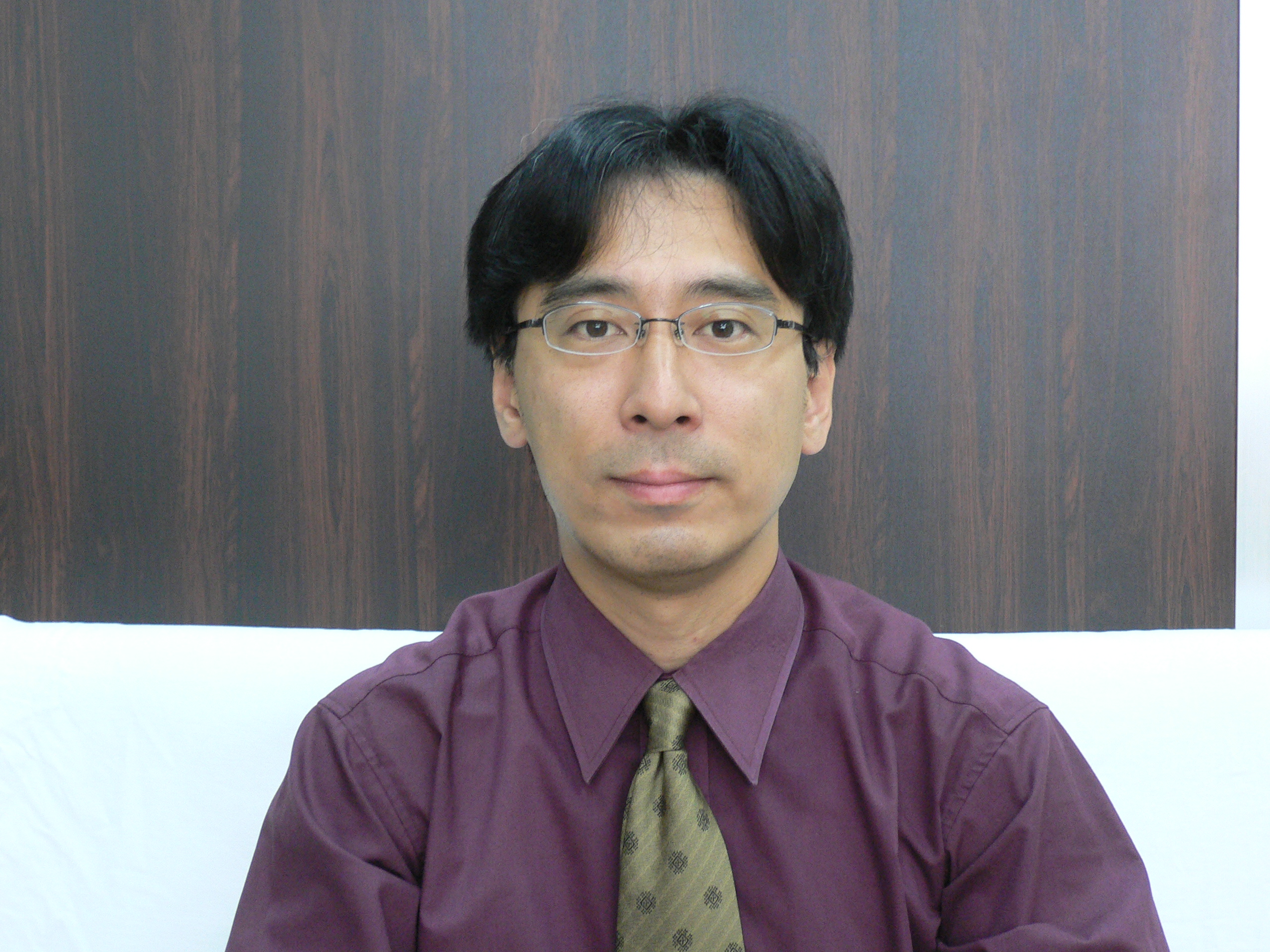
Speaker: Prof.Yasuhiro SAKEMI
Affiliation: Center for Nuclear Study (CNS), University of Tokyo
Schedule: Wed 1st MARCH 2017(16:00-)
Place: Main research building, 5th floor, 535,537
Language: English
Abstract:
An Electric Dipole Moment (EDM) of the elementary particle is a good prove to observe the phenomena beyond the Standard Model (SM). A non-zero EDM shows the CP violation, which is one of the important signals to understand the mechanism how the mater-antimatter asymmetry has been evolved in our universe. In this seminar, the status of the EDM experiment of a heaviest alkali element francium (Fr) will be reported, where an electron EDM results in an atomic EDM enhanced by the factor of the 3rd power of the charge of the nucleus due the relativistic effect. Also the possible extension to the higher accuracy search for the heavy polar molecules Fr-Sr EDM will be shown, which are produced by associating laser cooled two species of atoms with a Feshbach resonance. The strategy to get the information on the mass hierarchy of the unknown particles predicted by the theory beyond the SM will be discussed
Searching for ultralight dark matter with atomic spectroscopy and magnetic
resonance

Speaker: Prof.Dmitry Budker
Affiliation:
1.Helmholtz Institute, Johannes Gutenberg University, Mainz, Germany
2.Department of Physics, University of California, Berkeley, California, USA
3.
Nuclear Science Division, E. O. Lawrence Berkeley National Laboratory, Berkeley, California, USA
Schedule: Thu 5th JANUARY 2017(16:00-)
Place: Main research building, 5th floor, 535,537
Language: English
Abstract:
Axions, axion-like particles (ALPs), dilatons, and other ultralight (masses from 10-4 down to 10-23 eV) particles have been discussed as possible candidates for dark matter. An interesting feature of these ideas is that they lead to predictions of potentially observable transient and
oscillating effects. I will describe how we are looking for these as well as the relation of such experiments to tests of fundamental symmetries (P, CP, T, CPT …). For up-to-date information on our various experiments in this area (CASPEr, GNOME, differential atomic-dysprosium clock, etc.), please refer to the web pages
[1,2].[1]https://budker.uni-mainz.de/
[2]http://budker.berkeley.edu/
Search for Dark Matter, variation of fundamental tle constants and physics beyond Standard model using atomic physics methods
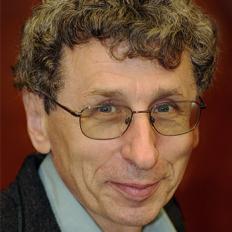
Speaker: Prof.Victor Flambaumi
Affiliation: UNSW Australia
Schedule: Thu 29th SEPTEMBER 2016(16:00-)
Place: Main research building, 5th floor, 535,537
Language: English
Abstract:
Low-mass boson dark matter particles produced after Big Bang form
classical field and/or topological defects. In contrast to traditional
dark matter searches, effects produced by interaction of an ordinary
matter with this field and defects may be first power in the underlying
interaction strength rather than the second power or higher (which
appears in a traditional search for the dark matter) [1-12]. This may
give a huge advantage since the dark matter interaction constant is
extremely small. Interaction between dark matter and ordinary matter may
produce both ‘slow’ cosmological evolution and oscillating variations of
the fundamental constants including the fine structure constant alpha
and particle masses. Recent atomic dysprosium and CS/Rb spectroscopy
measurements and astrophysical data allowed us to improve on existing
constraints on certain types of Dark matter by up to 15 orders of
magnitude [4].
In addition to traditional methods to search for the variation of the
fundamental constants (atomic clocks, quasar spectra, Big Bang
Nucleosynthesis, etc) we discuss variations in phase shifts produced in
laser/maser interferometers (such as giant LIGO, Virgo, GEO600 and
TAMA300, and the table-top silicon cavity and sapphire interferometers)
[5,6] and changes in pulsar rotational frequencies (which may have been
observed already in pulsar glitches) [7]. Other effects of dark matter
and dark energy include apparent violation of the fundamental
symmetries: oscillating or transient atomic electric dipole moments,
precession of electron and nuclear spins about the direction of Earth’s
motion through an axion condensate (the axion wind effect), and
axion-mediated spin-gravity couplings [8-10], violation of Lorentz
symmetry and Einstein equivalence principle [11,12].
We suggest a method to measure for the first time the quadrupole
moments of the neutron distribution in nuclei using parity violation
effects in atoms and molecules [12]. Molecules can also be used to
measure time invariance violating nuclear magnetic quadrupole moment,
CP-violating nuclear interactions and electric dipole moments [13].
References:
[1] M. Pospelov, S. Pustelny, M. P. Ledbetter, D. F. Jackson Kimball, W.
Gawlik, and D. Budker. Phys. Rev. Lett. 110, 021803 (2013).
[2] A. Derevianko and M. Pospelov. Nature Physics 10, 933 (2014).
[3] P.W. Graham, S. Rajendran. Phys. Rev. D84, 055013 (2011); D88,035023
(2013).
[4] Can dark matter induce cosmological evolution of the fundamental
constants of Nature? Y. V. Stadnik and V. V. Flambaum. Phys. Rev. Lett.
115, 201301 (2015).
[5] Searching for Dark Matter and Variation of Fundamental Constants
with Laser and Maser Interferometry. Y. V. Stadnik and V. V. Flambaum.
Phys. Rev. Lett. 114, 161301 (2015).
[6] Enhanced effects of variation of the fundamental constants in laser
interferometers and application to dark matter detection, Y. V.
Stadnik, V. V. Flambaum, Phys. Rev. A 93, 063630 (2010).
[7] Searching for Topological Defect Dark Matter via Nongravitational
Signatures. Y. V. Stadnik and V. V. Flambaum. Phys. Rev. Lett. 113,
151301 (2014).
[8] Axion-induced effects in atoms, molecules and nuclei: Parity
nonconservation, anapole moments, electric dipole moments, and
spin-gravity and spin-axion momentum couplings. Y. V. Stadnik and V. V.
Flambaum. Phys. Rev. D 89, 043522 (2014).
[9] Limiting P-odd Interactions of Cosmic Fields with Electrons, Protons
and Neutrons. B. M. Roberts, Y. V. Stadnik, V. A. Dzuba, V. V. Flambaum,
N. Leefer and D. Budker. Phys. Rev. Lett. 113, 081601 (2014).
[10] Parity-violating interactions of cosmic fields with atoms,
molecules and nuclei: Concepts and calculations for laboratory searches
and extracting limits. B. M. Roberts, Y. V. Stadnik, V. A. Dzuba, V. V.
Flambaum, N. Leefer and D. Budker. Phys. Rev. D 90, 096005 (2014).
[11] V.A. Dzuba, V.V. Flambaum, M. Safronova, S.G. Porsev, T.
Pruttivarasin, M.A. Hohensee, H. Haffner. Nature Physics (2016),
DOI:10.1038/nphys3610.
[12] Enhancing effects of Lorentz invariance and Einstein’s equivalence
principle iolation in atoms and nuclei. V.V. Flambaum. Phys. Rev. Lett.
117, 072501 (2016).
[13] Time-reversal symmetry violation in molecules induced by nuclear
magnetic quadrupole moments, V. V. Flambaum, D. DeMille, and M. G.
Kozlov, Phys. Rev. Lett. 113, 103003 (2014).
The r-process: status & challenges

Speaker: Prof. Yong-Zhong Qian
Affiliation: The University of Minnesota
Schedule: Thu 1st, September 10:00―
Place: RIBF Bldg.2F Big Conference Room
Language: English
Abstract:
supernovae and neutron-star mergers on the other. Astrophysical models of the r-process will be discussed in comparison with observational data. The needs for experimental input on nuclear properties, observational signatures of an ongoing r-process, and a comprehensive framework for understanding the role of the r-process in chemical evolution of galaxies are emphasized.
Casting Light on Antimatter: Fundamental Physics with Trapped Antihydrogen
This seminar is jointly organized by the E3 project and RIBF nuclear physics seminar
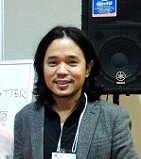
Speaker: Makoto C Fujiwara
Affiliation: TRIUMF
Schedule: Monday 4th JULY 2016(15:00-)
Place: RIBF Bldg.2F Big Conference Room
Language: English
Abstract:
Antihydrogen, an atomic form of antimatter consisting of an antiproton and
a positron, is a promising tool for testing some of the most fundamental symmetries
in physics, such as CPT invariance and Einstein’s Equivalence Principle in General
Relativity. Several experiments at CERN’s Antiproton Decelerator facility have been
working towards the ultimate goal of precision measurements of antihydrogen properties, since the start of the AD in 1999. Among them are the ATHENA and ALPHA experiments.
Important milestones have been achieved by both experiments over the past 15 years,
including production of cold antihydrogen [1], stable confinement of antihydrogen for as long as 1000 seconds [2, 3], and the first proof-of-principle spectroscopic measurement on antihydrogen atoms [4].
Following these milestones, the ALPHA collaboration recently constructed an entirely
new apparatus, ALPHA-2. It allows laser access to the trapped anti-atoms, enabling
laser cooling and precision spectroscopy. The first physics results with the new apparatus has been recently reported: a precision measurement of charge neutrality of antihydrogen [5], which in turn provides an improved measurement of the electric charge of the positron, as a test of CPT. In the meantime, the collaboration is developing an ambitious new project, ALPHA-g, to study the gravitational properties of antimatter to address, for the first time, the question of whether antimatter falls in the same way as matter does.
In this talk, I will start with some discussions of the motivations [6], followed by recent achievements and the future prospects of the fundamental physics studies with ALPHA.
References:
[1] M. Amoretti et al. (ATHENA Coll.), Nature 419, 456 (2002).
[2] G.B. Andresen et al. (ALPHA Coll.), Nature 468, 673 (2010).
[3] G.B. Andresen et al. (ALPHA Coll.), Nature Physics 7, 558 (2011).
[4] C. Amole et al. (ALPHA Coll.), Nature 483, 439 (2012).
[5] M. Ahmadi et al. (ALPHA Coll.), Nature 529, 373 (2016).
[6] M.C. Fujiwara, Antihydrogen, CPT, and Naturalness, arXiv:1309.7468.
Contact:Sarah Naimi snaimi(@)riken.jp Spin Isospin Laboratory
Precision Tests of Discrete symmetries at Low Energies

Speaker: Prof. dr. K.H.K.J. (Klaus) Jungmann
Affiliation: University of Groningen
Schedule: Tuesday 24th November 2015(10:00-11:00)
Place: Main research building, 5th floor, 535,537
Language: English
Abstract:
---
The Quantum Way of Doing Computations
Speaker: Prof.
Rainer Blatt
Affiliation: Institute
for Experimental Physics, University of Innsbruck,
Technikerstrasse 25, A-6020 Innsbruck, Austria
Institute for Quantum Optics and Quantum Information,
Austrian Academy of Sciences, Otto-Hittmair-Platz 1, A-6020 Innsbruck, Austria
Schedule: Thu 8th October 2015 (14:00-16:00)
Place: RIBF Bldg.2F Big Conference Room
Language: English
Abstract:
Since the mid-nineties of the 20th century it became apparent that one of the centuries’ most important technological inventions, computers in general and many of their applications could possibly be further enormously enhanced by using operations based on quantum physics.
This is timely since the classical roadmaps for the development of computational devices, commonly known as Moore’s law, will cease to be applicable within the next decade due to the ever smaller sizes of the electronic components that soon will enter the quantum physics realm. Computations, whether they happen in our heads or with any computational device, always rely on real physical processes, which are data input, data representation in a memory, data manipulation using algorithms and finally, the data output. Building a quantum computer then requires the implementation of quantum bits (qubits) as storage sites for quantum information, quantum registers and quantum gates for data handling and processing and the development of quantum algorithms. In this talk, the basic functional principle of a quantum computer will be reviewed.
It will be shown how strings of trapped ions can be used to build a quantum information processor and how basic computations can be performed using quantum techniques. In particular, the quantum way of doing computations will be illustrated by analog and digital quantum simulations and the basic scheme for quantum error correction will be introduced and discussed. Scaling-up the ion-trap quantum computer can be achieved with interfaces for ion-photon entanglement based on high-finesse optical cavities and cavity-QED protocols, which will be exemplified by recent experimental results.
Electric Dipole Moment of the Electron: Probe of New Physics Beyond the Standard Model

Speaker: Prof. Bhanu Pratap Das
Affiliation: Tokyo Institute of Technology
Schedule: Fri 11th September 2015 (11:00-12:00)
Place: Main building seminar room (535,537) RIKEN
Language: English
Abstract:
The observation of a permanent electric dipole moment (EDM) of a
physical system is a signature of the simultaneous violations of parity
(P) and time-reversal (T) symmetries. T violation implies the violation
of the combined symmetries of charge conjugation and parity;i.e. CP
violation via the CPT theorem. The origin of CP violation is still not
well understood. This phenomenon has only been observed in the K and B
mesons, and the results are essentially in agreement with the
predictions of Kobayashi and Maskawa in the framework of the standard
model of particle physics. However, this model cannot explain the
matter-antimatter asymmetry in the universe for which CP violation is a
prerequisite. In addition, its prediction of the electron EDM is several
orders of magnitude below its current limit. Indeed the electron EDMs is
an excellent probe of new physics beyond the standard model.
The talk will focus on the EDM of the electron. After touching upon the
connection of the electron EDM with the standard model, its
manifestation in atoms and molecules will be highlighted. The symbiotic
relationship between atomic/molecular theory and experiment in
determining the electron EDM will be emphasised. The present status and
the future prospects of the search for the electron EDM will be
presented and their implications for physics beyond the standard model
will be discussed.
Beta-decay of highly-charged ions
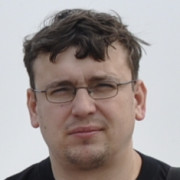
Speaker: Prof.Yuri A. Litvinov
Affiliation: GSI Helmholtzzentrum für Schwerionenforschung
Schedule: WED 17th Jun 2015 AM 10:30-12:00
Place: Main building seminar room (435,437) RIKEN
Language: English
Abstract:
High atomic charge states can significantly influence nuclear decay
rates. An obvious example is the electron capture (EC) decay
probability, which depends strongly on the number of bound electrons.
One of the straightforward motivations for studying the beta-decay of
highly charged ions (HCI) is that stellar nucleosynthesis proceeds at
high temperatures, where the involved atoms are highly ionized.
Furthermore, HCIs offer the possibility to perform basic investigations
of beta decay under clean conditions: The decaying nuclei having, e.g.,
only a single bound electron, represent themselves well-defined
quantum-mechanical systems, in which all interactions with other
electrons are excluded, and thus the complicated corrections due to
shake-off effects, electron screening etc. can be removed.
Largest modifications of nuclear half-lives with respect to neutral
atoms were observed in beta decay of fully ionized nuclei. Presently,
the ion-storage ring ESR at GSI in Darmstadt is the only tool in the
world for addressing radioactive decays of HCIs. There, the
radionuclides produced at high kinetic energies as HCIs and purified
from unwanted contaminants can be stored in the cooler-storage ring ESR.
Due to the ultra-high vacuum of about 10-10 mbar, the high atomic
charge states of stored ions can be preserved for extensive periods of
time (minutes, hours). The decay characteristics of electron cooled
stored HCIs can accurately be measured by employing the highly sensitive
non-destructive time-resolved Schottky spectrometry technique.
Recent experiments with stored exotic nuclei that have been
performed at the ESR will be discussed in this contribution. A
particular emphasis will be given to two-body beta decays, namely
bound-state beta decay and orbital electron capture.
As an outlook, the perspectives of future experiments with HCIs at
existing storage ring facilities (ESR in Darmstadt and CSRe in Lanzhou)
as well as at the planned facilities (TSR@ISOLDE, FAIR, HIAF, RI-RING)
will be outlined.
EDM Measurement with Ultracold Neutrons
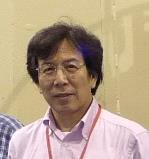
Speaker: Prof.Yasuhiro Masuda
Affiliation: Institute of Particle and Nuclear Studies, KEK
Schedule: Fri 29th May 2015 11:00-12:00
Place: Main research building, 5th floor, 535,537
Language: English
Abstract:
CP violation is one of important issues in particle physics. The CP
violation induces an electric dipole moment in the neutron (nEDM). With
nEDM, many theories of particle physics have been tested. Although the
standard model predicts very small values of nEDM, new physics such as
supersymmetric theory as well as multi-Higgs model, which is beyond the
standard model, predicts nEDM values in a 10^{-27} e cm region. The
present state of the arts nEDM measurement is at Grenoble, which shows
the upper limit of 3×10^{-26} e cm. In this measurement, ultracold
neutrons (UCN) was used. UCN are very low energy neutrons, which can be
confined in a measurement cell. The precision of the measurement was
limited by the number of UCN in the cell, but the improvement of the
number of UCN was strongly limited by Liouville’s theorem. Many
institutes have been developing super thermal UCN sources, which get rid
of this limitation. Here, we discuss our approach to this problem. Our
UCN source became world competitive. We also discuss the present status
and the future direction of our nEDM measurement.
Laser spectroscopyof Ar13+ trapped in an Electron Beam Ion Trap

Speaker: Dr.Volkhard Maeckel
Affiliation: RIKEN Atomic Physics Research Unit
Schedule: Tue 14th April 2015, AM11:00-12:00
Place: Main building seminar room (535,537) RIKEN
Language: English
Abstract:
The latest Results and Perspective of LHC. Where is Supersymmetry?
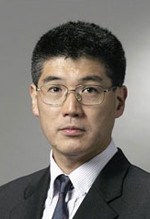
Speaker: Prof.Shoji Asai
Affiliation: Asai Laboratory,Department of Physics, Graduate School of
Science, The University of Tokyo
Schedule: Tue 31th Marchi 2015,
Place: Room 535&537, Main building
Language: English
Abstract:
---
The magnetic moments of the proton and the antiproton

Speaker: Dr. A. Mooser
Affiliation: Ulmer Initiative Research Unit RIKEN
Schedule: Wed 25th Feb 2015, AM11:00-12:00
Place: Room 435&437, Main building
Language: English
Abstract:
PDF
Frequency-resolved optical gating technique for retrieving the amplitude of a vibrational wavepacket
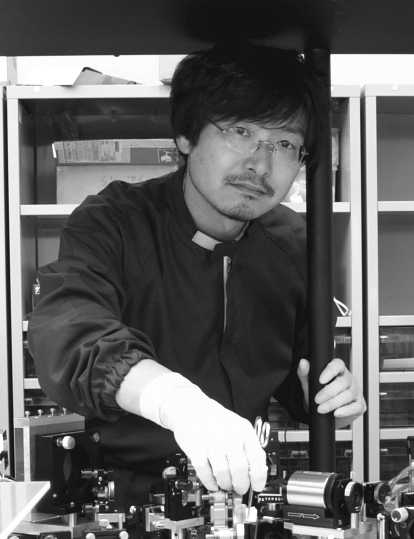
Speaker: Dr.Yasuo Nabekawa
Affiliation: RIKEN Laser Technology Laboratory
Schedule: Mon 26th Janu 2015, AM11:00-12:00
Place: Co operation center w317-321 RIKEN
Language: English
Abstract:
We propose a novel method to determine the complex amplitude of each
eigenfunction comprising a vibrational wavepacket of H2+/D2+ molecular ions
evolving with a ∼10 fs time scale generated and probed with a pair of
attosecond pulse train. We find that the two-dimensional spectrogram of the
kinetic energy release (KER) of H+/D+ fragments plotted against the time
delay of the probe pulse is equivalent to the spectrogram used in the
frequency-resolved optical gating (FROG) technique to retrieve the complex
amplitude of an ultrashort optical pulse. By adapting the FROG algorithm
to the delay-KER spectrogram of the vibrational wavepacket, we have
reconstructed the complex amplitude.
Resonance phenomena in quantum mechanical collision processes:How they emerge in atomic and molecular physics

Speaker: Dr.ISAO SHIMAMURA
Affiliation: RIKEN Atomic Physics Laboratory
Schedule: TUE 16th DEC2014, AM11:00-12:00
Place: Room 224&226, Main building
Language: English
Abstract:
Resonance phenomena in quantum mechanical collision processes:
How they emerge in atomic and molecular physics
Isao Shimamura, Atomic Physics Laboratory, RIKEN
Resonances of different types found in various fields of physics strongly affect physical phenomena for particular values of the relevant physical parameters. In this talk, I will discuss quantum mechanical resonance phenomena, especially, in collision processes involving atoms and molecules.
Quantum mechanical systems may have bound states with definite energy values. They may also have so-called quasi-bound or resonance states at some particular energies, which are similar to bound states but decay automatically in a finite lifetime, unlike true bound states. Such a resonance state, if formed as an intermediate state, can strongly enhance or suppress a two-body collision process at collision energies in a narrow range compared with that outside this range. This is a resonance process.
I will present some extraordinary examples in the absorption of synchrotron radiation by atoms and in scattering of an electron beam by atoms and molecules, experimentally observed in detail and fully analyzed theoretically. In electron-molecule collisions, in particular, the dynamic coupling between electronic and nuclear motions results in rich physics owing to the breakdown of the adiabatic approximation. Furthermore, recent developments in the study of ultracold quantum gases have led to magnetic control of resonances in atom-atom collisions to occur at extremely low energies, thus controlling the physical properties of ultracold gases.
Search for a Permanent Electric Dipole Moment in Diamagnetic Atom 129Xe

Speaker: Prof. Koichiro Asahi
Affiliation: Tokyo Institute of Technology Departmrnt of Physics
Schedule: FRI 31th OCT 2014, AM10:00-12:00
Place: RIBF Bldg.2F Big Conference Room
Language: English
Abstract:
The Standard Model (SM) of elementary particles, whose last ingredient has recently joined the ranks of the known particles, is considered as an effective theory that very successfully describes physics within the scale of low energies. At higher energies or in higher precision experiments, new physics beyond the SM is expected to manifest itself. A CP-violating, flavor-diagonal observable such as the permanent electric dipole moment (EDM) is the most promising site to look for physics beyond the SM. We at Tokyo Tech have been preparing for an experiment searching for EDM in a diamagnetic atom 129Xe, by using a spin maser of new type which employs an external feedback scheme with optical spin detection. Recently we have incorporated a 3He spin maser as a co-magnetometer, which runs concurrently with the 129Xe spin maser. In the talk, principles and methods in our experiment, the present status of the project and future prospects including a plan for 129Xe-131Xe difference EDM will be discussed.
Search for Neutron Antineutron Oscillation with Free Neutrons

Speaker: Prof. Hirohiko SHIMIZU
Affiliation: NAGOYA University
Division of Particle and Astrophysical Science, Graduate School of Science
Schedule: Wed 17th SEP 2014, 16:00-17:00
Place: Room 535&537, Main building
Language: English
Abstract:
---
Test of Lorentz Symmetry with Trapped Atoms
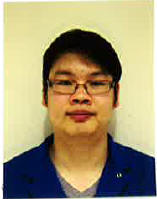
Speaker: Dr.Pruttivarasin Thaned
Affiliation: RIKEN Quantum Metrology Laboratory
Schedule: Thursday, 28th August 2014, 11:30
Place: Room 435&437, Main building
Language: English
Abstract:
Lorentz symmetry, which requires the outcome of the experiment to be independent of its absolute orientation in space, is perhaps the most important cornerstone in modern physics, especially the Standard Model of particles. However, physics beyond the Standard Model might allow breaking of Lorentz symmetry at the experimental accessible energy scale. Therefore, a search for violation of Lorentz symmetry directly probes physics beyond the Standard model. Precision testing of Lorentz symmetry has been undergoing a rapid progress recently due to development in laser technology and atomic physics. In this talk, a novel experiment utilizing trapped calcium ions as a direct probe of Lorentz-violation is presented. Our result improves on the current most stringent bounds on Lorentz symmetry by up to five times. The experimental scheme is readily applicable to many ion species, including highly-charged ions, hence opening up paths toward much improved test of Lorentz symmetry in the future.
Study of quantum many-body physics with ultracold atoms
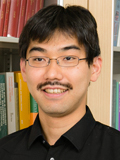
Speaker: Dr. Takeshi Fukuhara
Affiliation: RIKEN Center for Emergent Matter Science
Quantum Many-Body Dynamics Research Unit Unit Leader
Schedule: 16:00-, 23th JULY (Wed)
Place: Room 535&537, Main building
Language: English
Abstract:
Ultracold atoms offer unique opportunities to study quantum many-body systems with excellent controllability of their parameters. Especially, atoms loaded into periodic potential (optical lattice) generated by a laser beam can mimic the Hubbard model, where a quantum phase transition occurs from a metallic (superfluid) phase to an insulating phase.
In this talk I will present two experimental results with such systems. The first topics is a "Higgs" mode in condensed matter. We observed the Higgs amplitude modes in a two-dimensional superfluid close to the transition point [1], where the system is described by a relativistic field theory. In the second topic, I will talk about quantum dynamics of spin impurities (magnons) in a one-dimensional spin chain comprising atoms in the insulating phase. By tracking the dynamics with high resolution in space and time, we microscopically observed two-magnon bound states [2], which were predicted more than 80 years ago by Hans Bethe, who is also known as a famous nuclear physicist. [1] M. Endres, T. Fukuhara et al., Nature 487, 454 (2012). [2] T. Fukuhara et al., Nature 502, 76 (2013).
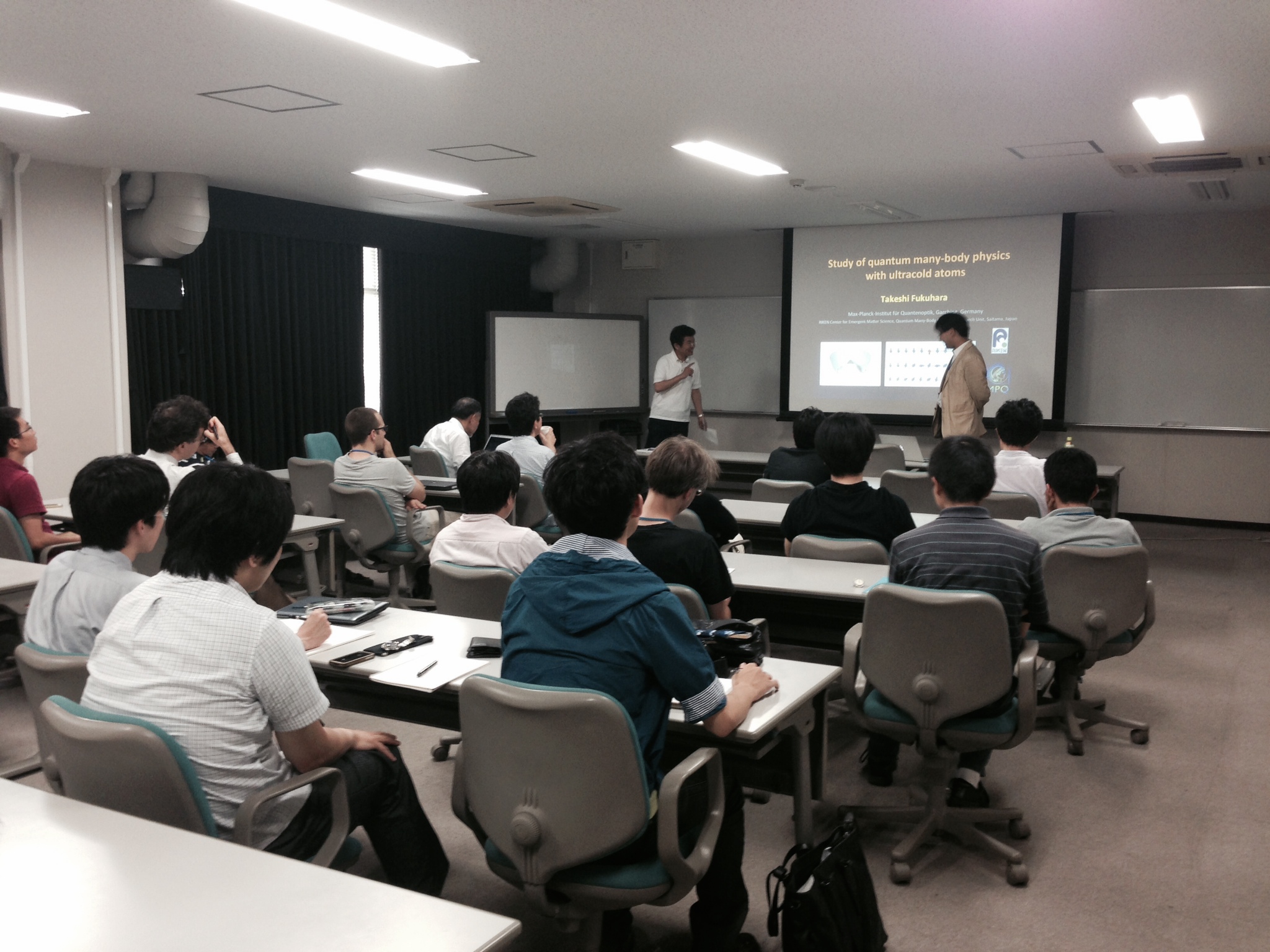
Ion traps for RI and possible extension to HCI spectroscopy
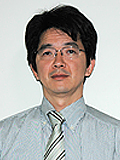
Speaker: Dr. MICHIHARU WADA
Affiliation: RIKEN Nishina Center for Accelerator-Based Science
SlowrI Team Team Leader
Schedule: 16:00-, 28th May (Wed)
Place: Room 535&537, Main Research Building
Language: English
Abstract:
Kick off
Speaker: ---
Affiliation: ---
Schedule: ---
Place: ---
Language: English
Abstract:
---
